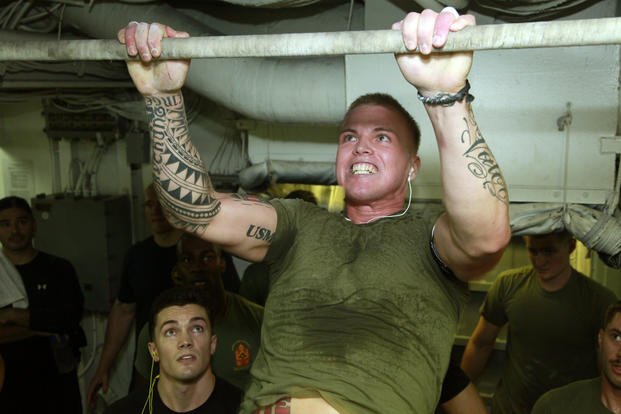Often, the first hurdle people face when joining the military is the physical fitness and height/weight standards. Most recruits typically have to deal with both issues. The number one reason why the current population of recruits cannot join the military is that they fail to meet the physical, body-fat and/or medical standards.
In our country's history, other issues were the main culprit in preventing young men or women from serving, like education, test scores, criminal records and medical issues. Here is one of the most common questions asked and situations seen in recruiter offices:
Hi, I'm Val and I'm 17 years old. I plan on going into the Army National Guard and I need to not only lose weight, but work on my strength and running. I just need tips and how to run better. Currently I run a mile every other day, and I average around 13:30 (I've been improving). Any advice you could give me would help immensely. Thank you. Val
Val, I applaud you for wanting to serve your country and community in the National Guard. And it is smart to prepare yourself not just for the recruiting and MEPS standards upon entering, but the following training programs, too.
Once you build a foundation of fitness and can pass the physical fitness test, you should increase your training so that you incorporate training to prepare you for longer runs, rucking and other load-bearing exercises like equipment carries.
We call this part of tactical fitness preparing to get to and through the training -- phase 1 and 2 of training. Right now, you need to get in basic shape to get to the training, then build upon that in order to get through the training without struggle or injuries to hold you back or disqualify you.
Starters Plans: Right now, you need to focus on moving more and eating less by doing basic calisthenics, weight training and a mix of walking and running. Adding in some non-impact days between running days will help you deal with the pains of walking/running while overweight.
See ideas in the non-impact cardio options. The 45-Day Plan is a good place to start with basic strength (core and push-ups) as well as learn how to eat to lean down. Consider these diet tips. Basically, "move more, eat less" is your new mantra.
The above phase can take 2-3 months. As you get to an acceptable military weight, you can start to progress your running speed and distances to get faster at the timed runs and beyond.
This running plan and training method will take a basic foundation of running and help you advance into not just a barely passing PFT taker, but someone who is capable of being more competitive with your physical abilities. That is where you want to be before you enter into a military contract with a recruiter.
Good luck with this journey and remember you are not alone. Also, do not be in a big hurry to join the military. Go when you are ready to serve. Take your time. Do it right and avoid the pains and potential injury of basic training if you attend underprepared.
Stew Smith is a former Navy SEAL and fitness author certified as a Strength and Conditioning Specialist (CSCS) with the National Strength and Conditioning Association. Visit his Fitness eBook store if you're looking to start a workout program to create a healthy lifestyle. Send your fitness questions to stew@stewsmith.com.
Want to Learn More About Military Life?
Whether you're thinking of joining the military, looking for fitness and basic training tips, or keeping up with military life and benefits, Military.com has you covered. Subscribe to Military.com to have military news, updates and resources delivered directly to your inbox.
















